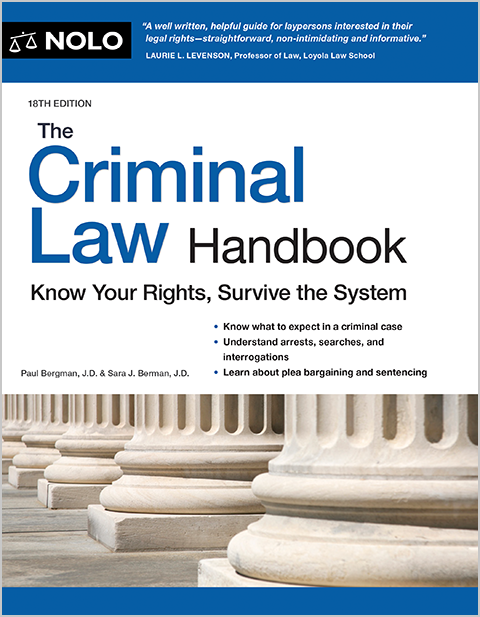Learn what you'll need to provide in the way of medical evidence to qualify for disability due to narcolepsy.
Narcolepsy is a sleep disorder that causes extreme drowsiness (somnolence) during the day. "Narcoleptics" (people who have narcolepsy) can fall asleep at any time, making the illness unpredictable and potentially hazardous. Although there's no cure for narcolepsy, medications and lifestyle changes—like scheduled naps—can sometimes make the symptoms manageable. After a brief period of sleep, someone with narcolepsy will usually wake feeling refreshed.
When not properly controlled, however, narcolepsy can make it dangerous to engage in many types of jobs. Even jobs in relatively safe environments can be difficult for people with narcolepsy to perform successfully if they can't complete tasks on time due to excessive daytime somnolence. If you struggle with narcolepsy to the point where you're unable to work full-time, you should be aware of how you can qualify for Social Security disability benefits.
- When Is Narcolepsy a Disability?
- How Can You Get Disability for Narcolepsy?
- What Are the Chances of Getting Disability for Narcolepsy?
- Can I Get VA Disability for Narcolepsy?
- How Much Can I Get in Disability Benefits for Narcolepsy?
- How to Apply for Disability for Narcolepsy
- What If I'm Working When I Apply for Benefits?
- Do I Need to Hire a Disability Attorney?
When Is Narcolepsy a Disability?
The Social Security Administration (SSA) awards disability benefits to people who have a medical impairment that keeps them from earning at or above the level of substantial gainful activity for at least twelve months. That means you'll need to have significant medical evidence showing that symptoms of narcolepsy keep you from working full-time for a year or more.
You'll also have to meet certain technical eligibility criteria for receiving either Social Security Disability Insurance (SSDI) or Supplemental Security Income (SSI), the two disability programs run by the SSA. If you don't meet the preliminary financial requirements for at least one type of benefit, you won't qualify for disability, no matter how severe your narcolepsy symptoms are.
How Can You Get Disability for Narcolepsy?
Because narcolepsy isn't included in the agency's Blue Book of listed impairments that can automatically qualify for disability benefits, you'll need to establish that your narcolepsy is either equivalent to a listed impairment or that it causes functional limitations resulting in a residual functional capacity (RFC) that rules out all jobs.
Getting Disability by Equaling the Epilepsy Listing
In order to equal a listing, you must establish that your symptoms are as severe as those of a condition in the Blue Book. For narcolepsy, that could mean having episodes similar in intensity, frequency, and duration as dyscognitive seizures (a type of seizure that doesn't involve convulsions but does cause a lack of awareness).
Dyscognitive seizures are evaluated under listing 11.02 for epilepsy, which requires that they occur at least once a week for at least three consecutive months despite regular treatment. So if you've been taking your medication as prescribed but you still have episodes of falling asleep at the level of frequency required by listing 11.02, the SSA may consider your narcolepsy to be equivalent to epilepsy and award you disability benefits.
Getting Disability with an RFC for Reduced Productivity
You can still qualify for disability benefits without equaling the epilepsy listing if your narcolepsy limits you from safety and productively performing any job. The process by which Social Security decides what you can and can't do in a work environment, despite your symptoms, is called "assessing your RFC."
Social Security reviews your medical records and your activities of daily living to determine what restrictions to include in your RFC. For example, if you have trouble being on your feet or lifting heavy objects due to muscle weakness, your RFC may state that you can't stand or walk for longer than two hours in a workday or lift more than 10 pounds on a regular basis.
Claimants with narcolepsy often have a combination of both physical and mental restrictions in their RFC. You might need to take frequent, unscheduled naps throughout the day, or avoid tasks that could pose a significant safety risk to you, like climbing ladders, operating heavy machinery, and working with hazardous materials. And if your medication causes side effects that limit your ability to focus, complete job duties on time, or follow instructions, these limitations should also be included in your RFC.
Once Social Security has assessed your RFC, the agency will compare your current RFC with the demands of your past work to see if you could still do those jobs today. If not, the agency will then see whether any other jobs exist that you could perform safely despite the restrictions in your RFC. If you can't perform your past jobs or any other full-time work, Social Security will award you disability benefits. For claimants younger than 50, this typically means showing that you can't do simple sit-down work, while claimants 50 years of age or older may qualify using a special set of rules called the "medical-vocational grid."
What Are the Chances of Getting Disability for Narcolepsy?
Your chance of getting disability benefits depends mainly on the strength of your medical records. The more severe your symptoms are, the more likely it is that you'll be unable to engage in regular employment—so it's important that you provide the SSA with as much medical evidence as possible to support your limitations. The agency will be on the lookout for documentation of the following in your medical records:
- sleep studies
- electroencephalograms (EEGs) that measure electrical activity in the brain
- genetic testing
- sleep journals that you've kept to document your sleep patterns
- medication lists (along with a description of any side effects you experience), and
- clinical notes from your doctor's appointments containing your doctor's observations.
One key factor in building a strong medical record is letting your doctors know about any and all symptoms you have from your narcolepsy. These may include:
- sleep paralysis (an inability to move your body while waking up)
- visual and audio hallucinations while falling asleep or waking up, and
- cataplexy (a sudden loss of muscle tone that can make you feel weak or lose motor control) during stressful periods.
Your medical records should also contain information about the type of narcolepsy you've been diagnosed with. (Narcolepsy type 1 is a more severe form of narcolepsy that involves cataplexy, while narcolepsy type 2 doesn't involve cataplexy. Only about 20% of people with narcolepsy have type 1, which is more likely to be considered disabling.) You can also help strengthen your case with a helpful opinion from your treating doctor—preferably a neurologist who has experience with narcolepsy. Ask your doctor to provide a well-written, well-supported RFC form or statement that details how and why your narcolepsy equals a listing or rules out all work.
Can I Get VA Disability for Narcolepsy?
Veterans who have service-connected carpal tunnel syndrome may be eligible for disability compensation from the VA. According to the Schedule for Rating Disabilities, the VA assigns narcolepsy a diagnostic code of 8108, but evaluates the percentage rating for the condition under petit-mal epilepsy.
Petit-mal epilepsy is rated according to the general rating formula for minor seizures, which assigns a percentage of between 10% and 80% depending on the severity and frequency of your seizures. So, for example, if you have on average between five to eight episodes of narcolepsy every week, you'll likely get a percentage rating of 40%, but if you have more than 10 narcoleptic episodes per week, the VA will likely assign you a disability rating of 80%.
How Much Can I Get in Disability Benefits for Narcolepsy?
Social Security doesn't award benefits based on the type of disabling condition. Instead, the amount you'll receive if you're awarded benefits will depend on whether you're eligible for Social Security Disability Insurance (SSDI) or Supplemental Security Income (SSI). SSDI eligibility is determined by your work history and how much you've contributed to the program in payroll taxes, while SSI is a needs-based benefit available to people with limited resources.
For 2025, the maximum you can receive in SSDI benefits is $4,018 per month (although the average amount is much lower, at $1,580). SSI benefits are tied to the federal benefit rate, which in 2025 is $967 per month minus any countable income you have in that month. You can learn more in our articles on how much you can get in SSDI and how much you can get in SSI.
VA disability compensation is calculated using a combination of your disability percentage rating and your living situation. For example, in 2025, an individual veteran with a 40% rating can receive $774.16 every month while an individual veteran with a 80% rating can receive $2,044.89. Veterans with the same disability rating (40% and 80%) but who are married with one dependent child will receive higher payments, at $922.16 and $2,340.89 respectively.
How to Apply for Disability for Narcolepsy
Applying for Social Security disability isn't hard to do, but you'll need to provide a lot of information. You can apply in person at your local Social Security office, by phone at 800-772-1213 (TTY 800-325-0778), or online at SSA.gov. No matter which method you choose, it'll help if you have some information already gathered when you start. Social Security will need:
- your name, address, and Social Security number (SSN)
- if you're married, your spouse's name, address, and SSN
- your work history, including dates of employment, employers' names, your job title, and the type of work you performed
- medical information for all the doctors you've seen for narcolepsy and any hospitals you've been admitted to.
Don't delay filing your disability application because you don't have all the information and documents you need. The Social Security representative assigned to your case can help gather anything you're missing. (Learn more about the Social Security disability application process.)
What If I'm Working When I Apply for Benefits?
Working when you apply for disability benefits might be okay as long as you're not earning too much money. When you apply for SSDI or SSI disability, Social Security must determine whether or not you're working above what the agency calls the substantial gainful activity, or SGA, level. For 2025, the SGA amount for SSDI or SSI applicants is $1,620. It's $2,700 for blind SSDI applicants. (SGA limits don't apply to blind SSI applicants.)
That means if you earn $1,620 or more a month, Social Security will find that you're capable of doing substantial gainful activity (full-time work), and your claim will be denied. But if you're working below the SGA level—for example, you can only work 10 hours per week because of your narcolepsy symptoms—you could still qualify for benefits.
Do I Need to Hire a Disability Attorney?
You aren't required to have a lawyer at any stage of the Social Security or VA disability determination process, but it's generally a good idea. Most disability applicants aren't awarded on their first try, and will need to go through one or more appeals. You may want to consider hiring an experienced disability attorney who can help you explain in clear terms how your narcolepsy keeps you from working. And because disability lawyers work on contingency—meaning they don't get paid unless (and until) you win your claim—there's little risk in hiring one.
- When Is Narcolepsy a Disability?
- How Can You Get Disability for Narcolepsy?
- What Are the Chances of Getting Disability for Narcolepsy?
- Can I Get VA Disability for Narcolepsy?
- How Much Can I Get in Disability Benefits for Narcolepsy?
- How to Apply for Disability for Narcolepsy
- What If I'm Working When I Apply for Benefits?
- Do I Need to Hire a Disability Attorney?

